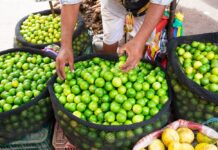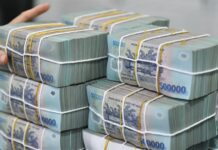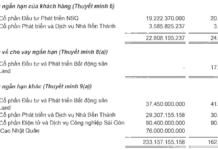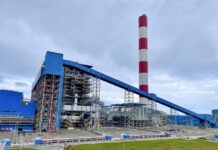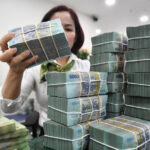These assessments were made by economic expert Can Van Luc at the Workshop on Promoting Credit for Key Agricultural Products, held in Can Tho on November 18, 2024, by the Dai Bieu Nhan Dan Newspaper.

Low lending rates to the agricultural sector are due to high risks. |
Access to capital is challenging
According to the workshop’s information, the banking sector has implemented numerous policies and mechanisms to support the socio-economic development of the Mekong Delta region. As of the end of September 2024, total credit outstanding in the Mekong Delta reached VND 1,180 trillion, an increase of 8% compared to the end of 2023. Of this, outstanding loans for agriculture, rural areas, and key industries in the region amounted to approximately VND 643 trillion, a 7% increase from 2023, accounting for 54% of the region’s total outstanding balance.
However, companies in the agricultural, forestry, and seafood industries in the Mekong Delta, including key sectors such as rice, seafood, and fruits, face challenges in accessing this capital. The State Bank of Vietnam recently announced that the implementation of some credit policies to serve agricultural and rural development has not met expectations.
For instance, unsecured loans only account for about 20% of agricultural and rural debt. Moreover, there hasn’t been much progress in lending to high-tech agriculture or production following linked and value chain models. Another significant obstacle is that the value of land used as loan collateral is low, and it takes a long time to obtain ownership certificates for constructions on that land, making it difficult to assess their value.
 Workshop overview. Source: CK.
|
Mr. Tran Viet Truong, Chairman of the Can Tho People’s Committee, pointed out that the Mekong Delta region is highly vulnerable to climate change impacts such as rising sea levels, saltwater intrusion, and flooding. These risks make lending institutions hesitant to provide loans, as agricultural production in the region heavily depends on weather conditions and the natural environment. Additionally, the small-scale and scattered nature of production units make it challenging for banks to control and accurately assess credit risks.
Furthermore, due to the fragmentation of land and its relatively low value, farmers often lack sufficient collateral to meet the requirements of banks. Agricultural loans typically carry higher interest rates than what farmers can afford. The absence of insurance solutions for agricultural production and the direct impact of natural disasters on farmers’ repayment abilities further contribute to banks’ cautious approach to lending in this sector…
Limitations and Challenges
Economist Can Van Luc pointed out that investment in agriculture and rural areas remains modest. While investment in agriculture, forestry, and fisheries increased from VND 60 trillion in 2011 to VND 144 trillion in 2023, its proportion compared to total social investment decreased from 5.1% in 2011 to 4.2% in 2023.
Mr. Luc highlighted several limitations and issues, notably the lack of strong and sustainable linkages among the four stakeholders. Commitments to product consumption at the output stage have not been taken seriously, affecting product consumption and creating difficulties for banks in loan recovery.
While there are policies and guidelines for agricultural insurance, their practical implementation has been slow, and no official expansion has occurred. There is also a lack of preferential capital sources for credit institutions to lend, forcing them to rely on high-interest commercial capital while facing lending rate ceilings.

Economist Can Van Luc shared his insights at the workshop. Source: CK. |
Mr. Luc suggested that to address this issue, three approaches are necessary. First, the government should provide a portion of seed capital to support the sector. Second, there should be a stronger focus on insurance to mitigate risks. Third, businesses, households, and farmers must strive for efficient production to generate sufficient income to repay bank loans, thereby reducing bad debts and risks, which will encourage banks to lend more confidently.
Another challenge mentioned by the expert is the lack of collateral or issues with collateral, often related to agricultural land. In some cases, the land has not been granted ownership certificates for registering security transactions, or it is rented with annual payments and cannot be mortgaged as per regulations. There are also assets with specific characteristics, such as greenhouses and production lines, which are difficult to value and have low liquidity…
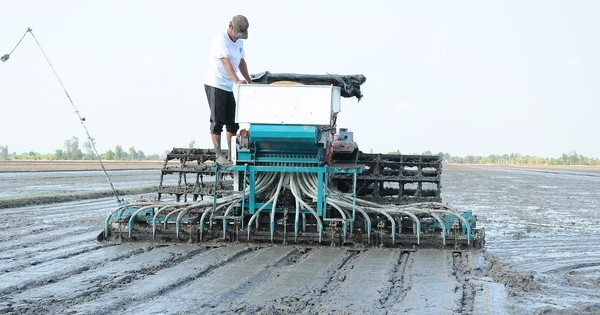 Access to credit in agriculture in the Mekong Delta remains challenging. Source: CK. |
Mr. Luc suggested that the government, ministries, and local authorities should improve the information system for market and agricultural produce price forecasting to help farmers and enterprises stabilize production and consumption. They should also develop marketing strategies and expand export markets for agricultural products, focusing on building brands and taking advantage of new-generation FTAs. Encouraging linkages and supply chain financing, especially lending to large purchasing enterprises, is another key recommendation.
Additionally, there should be a focus on developing agricultural infrastructure and more effective implementation of policies on risk insurance in agriculture. Localities should expedite the process of granting land-use rights certificates and ownership certificates for assets on that land, especially those formed from projects on agricultural land, such as greenhouses, net houses, and fish ponds…
In the monetary and financial sector, Mr. Luc proposed that the State Bank of Vietnam provide concessional loans with appropriate interest rates to encourage investment in agriculture and support credit institutions in lending to this sector. He also suggested implementing measures to improve financial services access and financial literacy among farmers and rural enterprises and developing or improving lending policies and procedures for different customer segments…
Canh Ky
Unleashing the Potential: Clearing Bottlenecks to Elevate Vietnam-Brazil Economic Cooperation
On November 17, local time (early morning of November 18 in Vietnam), Prime Minister Pham Minh Chinh attended the Vietnam-Brazil Business Forum in Rio de Janeiro, as part of his itinerary for the G20 Summit and bilateral engagements in Brazil.
Why Are Businesses Reluctant to Take Out Loans Despite Their Financial Constraints?
“Many businesses are choosing to forego additional loans and focus on generating revenue through sales alone. This strategy aims to avoid increased costs associated with borrowing, allowing them to reinvest in production and keep their operations running smoothly.”


